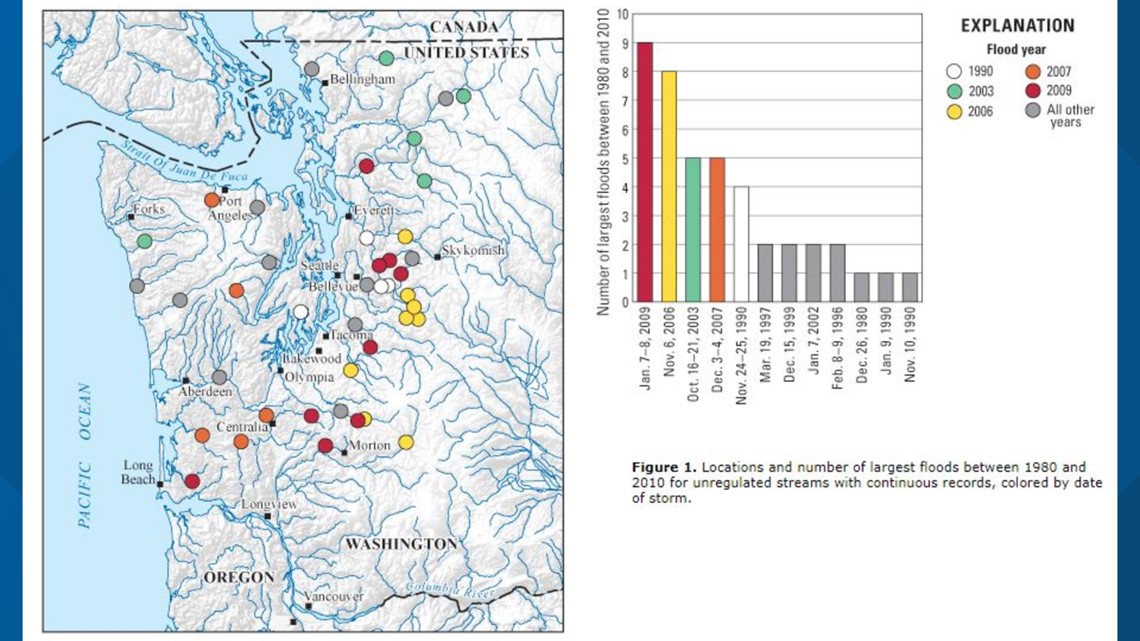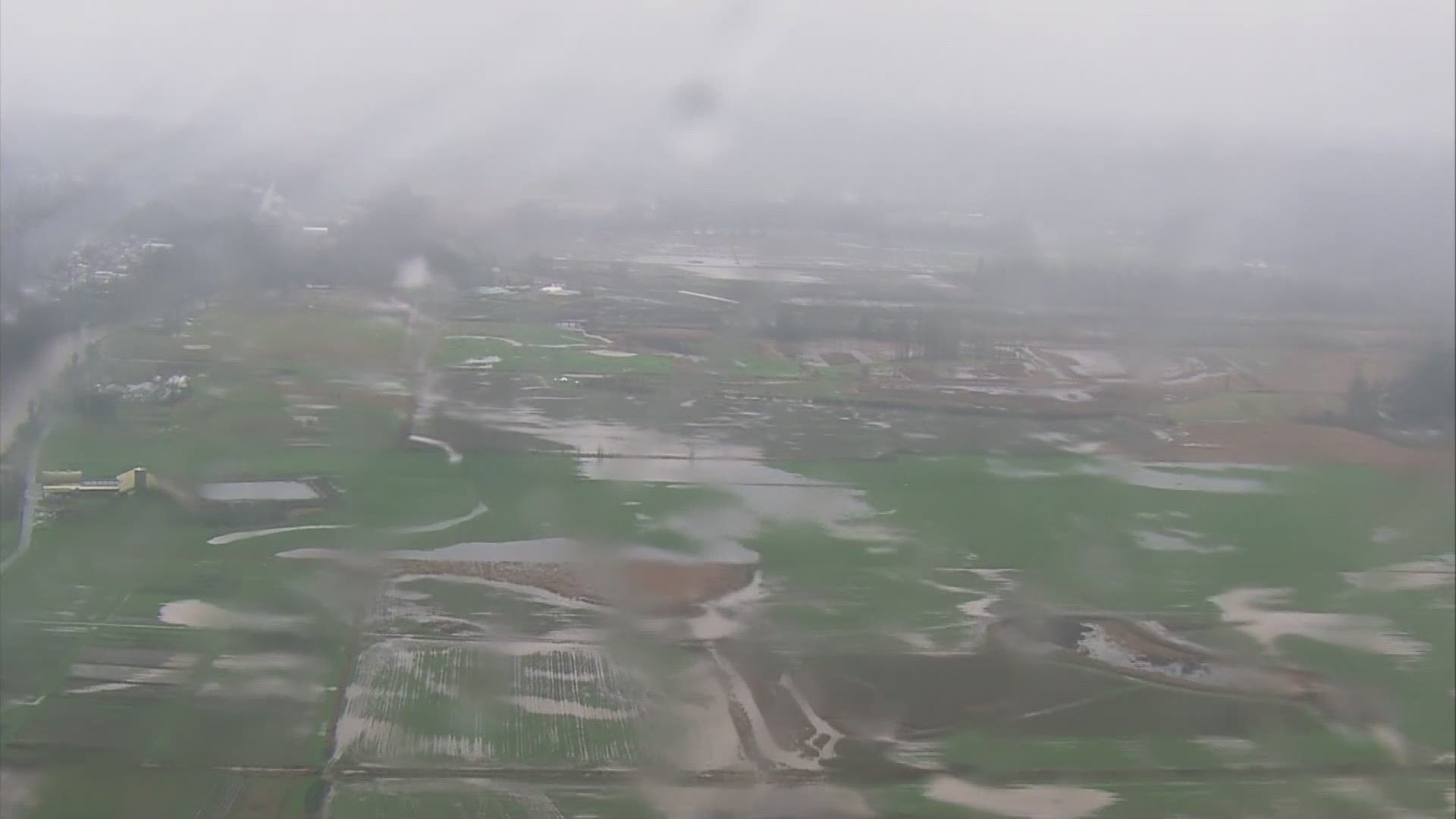Heavy rain continues to fall across western Washington and it has scientists dispelling some myths about flooding in our region.
The United States Geological Survey in Tacoma investigated some popular myths about flooding, here’s what they found out:
MYTH: A “100-year” flood only happens once every 100 years on average somewhere in western Washington.
FACT: A “100-year” flood happens once about every 4 ½ years on at least one western Washington river draining to Puget Sound.
The definition of a 100-year flood is a streamflow that has the probability of exceeding a given point in any given year by 1%. Streamgages are used to measure how much a stream has risen and how frequently large floods occur at that location.
Due to increased streamgages in the northwest area, the probability of recording a 100-year flood occurrence increases.
Scientists determined that rivers draining into Puget Sound have on average a 100-year flood every 4 ½ years.
MYTH: Flooding occurs randomly in time and location across western Washington.
FACT: Floods cluster in time and location.
Scientists used the 193 streamgages across Puget Sound to map where the largest floods occurred between 1980 and 2010. The below map shows that 31 of the 42 largest floods over the 30-year period occurred as a result of just five storms.


MYTH: Rain-on-snow and wet soils cause severe flooding.
FACT: Rainfall intensity and duration are responsible for all major floods in western Washington regardless of conditions prior to the event.
All the largest floods in western Washington are caused by intense precipitation due to atmospheric rivers (AR’s). An AR is a narrow band of concentrated low-level water vapor that, when encountering mountain ranges such as the Cascade Range, produces large amounts of rain. If an AR lingers over an area for a day or more, extreme flooding commonly occurs.
RELATED: Western Washington forecast

